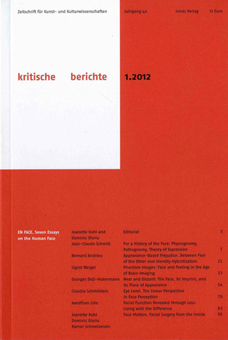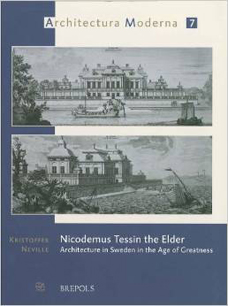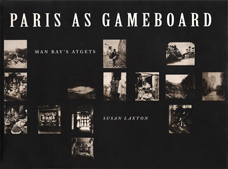 En Face. Seven Essays on the Human Face
En Face. Seven Essays on the Human Face
2012, Marburg
This thematic issue of the German art history journal kritische berichte gathers analytical approaches to the ‘phenomenon face’ from different disciplines: neurophysiology, philosophy of the body, cultural history, surgery, medieval history, and the history of art. In their contributions, the authors examine the face as medium and material, as mise-en-scene and matter, as mirror and membrane, producer and recipient – as a cultural construction and a human determinant. The essays are spurred by their author’s profound involvement with the questions: WHAT IS A FACE? What did and what does it mean, culturally, socially, psychologically, physiologically, aesthetically, historically? What might it look like in the future? What are our assumptions about what a face represents, what it means to lose one’s face, or live with someone else’s face. Often enough, we think of faces as identities. But, what does a face tell about ‘us’ – individually, culturally, and as a species? Perception and imagination, the belief in images and image making, they all overlap in the face. The book’s trans-disciplinary approach is a first step toward a cultural history of the face. It includes essays by Jean-Claude Schmitt, Bernard Andrieu, Sigrid Weigel, Georges Didi-Huberman, Claudia Schmoelders, Jonathan Cole, and an interview with the facial surgeon Rainer Schmelzeisen.





